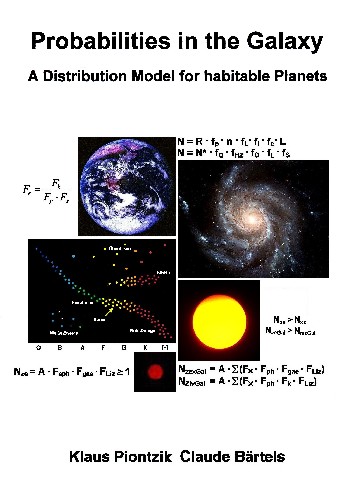The general approach thus provides
a total:
1:117 ≤ Fe
≤ 1:39
1:808 ≤ Fgae
≤ 1:269
The Drake-corrected Special Basic Model 9.6.1 provides:
1:156 ≤ Fe
≤ 1: 52
1:1.078 ≤ Fgae
≤ 1:359
The Seager-corrected Special Basic Model 11.2.1 provides:
1:100 ≤ Fe
≤ 1:31
1:691 ≤ Fgae
≤ 1:214
This makes it possible to determine the maximum limits
for the probability of a second Earth:
| 12.7.1 Equation |
1:152 ≤ Fe≤
1:31 |
This results in the earth's similarity:
| 12.7.2 Equation |
1:1078 ≤ Fgae
≤ 1:214 |
The 21 to 108 times the number of stars that have been
studied with the Kepler telescope by 2013 is still needed
to find an "Earth 2".
After the result, it will be another decade or
two before a second earth is found. If you take
the current speed of discovery as a basis. It would
therefore be a pure stroke of luck if a second earth were
to be found in the next few years.
A faster discovery of a second Earth is only possible if,
in a shorter period of time, even more stars were
examined than have been observed to date.
The basic model corrected by equations 12.7.1 and 12.7.2
is referred to below as the corrected special or
general basic model.
|
